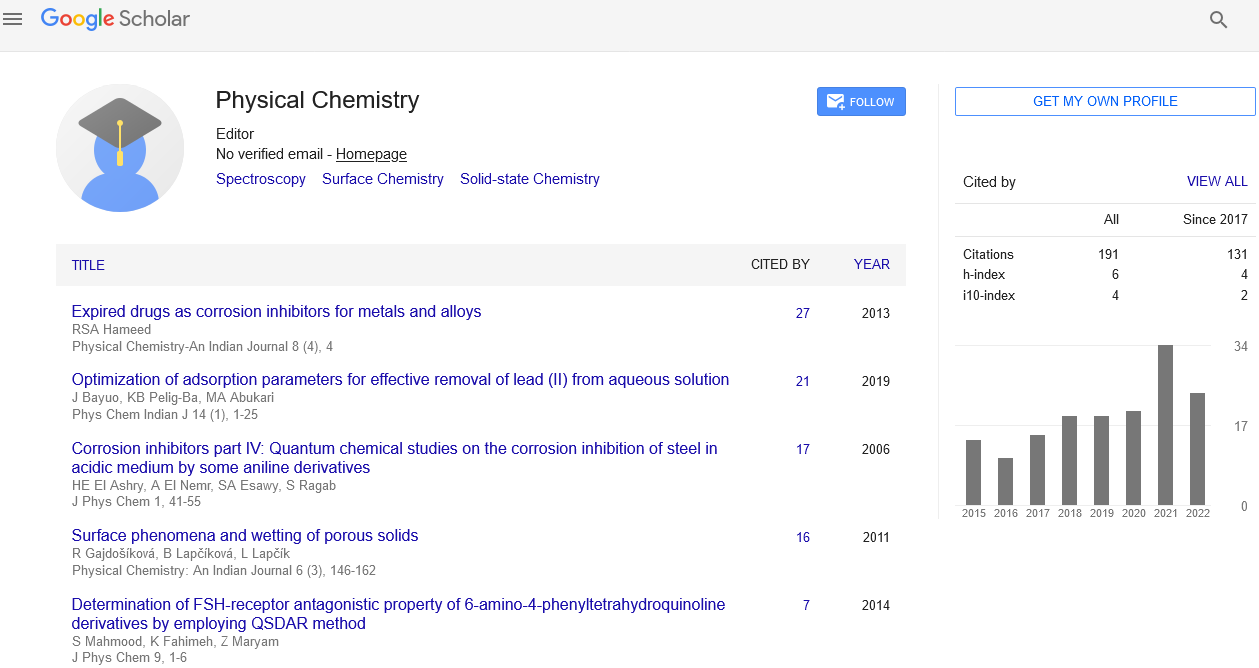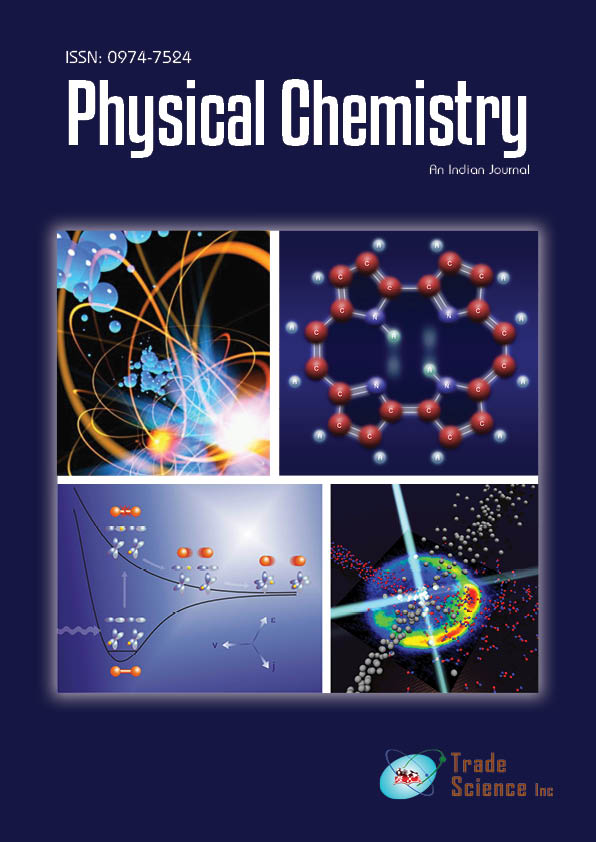Editorial
, Volume: 16( 3)Intermolecular Forces
Aakshi Kainthola*
- *Correspondence:
- Aakshi Kainthola
Department of Life Sciences,
Graphic Era Deemed to be University,
Dehradun,
India,
E-mail: aakshi.kan7@gmail.com
Received: May 11, 2021; Accepted: May 16, 2021; Published: May 21, 2021
Abstract
Intermolecular forces (or secondary forces) are the forces that mediate interactions between molecules, such as forces of attraction or repulsion between atoms and other types of nearby particles, such as atoms or ions. In comparison to intramolecular forces, which hold a molecule together, intermolecular forces are weak. Intermolecular forces are of following types: • Hydrogen Bonding • Ionic Bonding • Ion-Induced diapole forces • Ion diapole forces • Van der Waals forces
Intermolecular forces (or secondary forces) are the forces that mediate interactions between molecules, such as forces of attraction or repulsion between atoms and other types of nearby particles, such as atoms or ions. In comparison to intramolecular forces, which hold a molecule together, intermolecular forces are weak. Intermolecular forces are of following types:
- Hydrogen Bonding
- Ionic Bonding
- Ion-Induced diapole forces
- Ion diapole forces
- Van der Waals forces
Hydrogen Bonding: When a hydrogen atom connected to a strongly electronegative atom is in the neighbourhood of another electronegative atom with a lone pair of electrons, it creates a specific sort of dipole-dipole attraction called a hydrogen bond. Intermolecular Forces (IMFs) are the forces that exist between molecules. Ordinary dipole-dipole interactions and dispersion forces are some examples. The hydrogen is immediately connected to a highly electronegative atom, resulting in a very positive charge for the hydrogen. Each of the highly electronegative atoms has at least one "active" lone pair and a strong negative charge. The electrons in lone pairs at the 2-level are packed into a tiny volume of space, resulting in a high negative charge density. Hydrogen Bonds are stronger than dipole-dipole interactions but weaker than the covalent and ionic bonds.
Ionic Bonding: Ionic bonding is the principal interaction happening in ionic compounds, and it involves the electrostatic attraction between oppositely charged ions or between two atoms with sharply differing electronegativities. Along with covalent and metallic bonding, it is one of the most common types of bonding. Ionic bonds are formed when one or more electrons are transferred between two or more atoms. Electron transfer produces anions, which are negative ions, and cations, which are positive ions. These ions are attracted to one another. The energy cost of transferring electrons is more than the energy cost of attracting ions (the ionisation energy is greater than the electron affinity energy), but the energy cost of attracting ions is greater than the energy cost of transferring electrons. Ionic bonding can be modelled in a variety of ways, the most basic of which is a pair potential with an attracting and repulsive term.
Ion-induced dipole forces: Ion-induced dipole attraction is a weak attraction that occurs when an ion approaches and causes a dipole to form in an atom or a nonpolar molecule by disrupting the electron configuration in the nonpolar species. The strong interactions between ions and polar molecules are explained by the charges on ions and the charge separation in polar molecules, with very strong ion - ion contacts, weaker ion - dipole interactions, and very weaker dipole-dipole interactions. The valence electrons are constantly travelling throughout the molecule, and there will be times when there are more on one side than the other.
Ion-dipole Forces: Ion-induced dipole and ion-dipole interactions are similar to dipole-dipole and induced dipole-dipole interactions. Ion-dipole forces, on the other hand, involve ions rather than just polar molecules. Because the charge of any ion is substantially more than the charge of a dipole, ion-dipole forces are stronger than dipole interactions; the intensity of the iondipole force is proportional to ion charge.
Van der Waals Forces: For particular instances, such as non-ideal (real) gases, the Van der Waals equation is used to calculate an actual value. (P+n2aV2)(Vnb)=nRT .The V in the formula stands for the volume of gas, which is measured in moles n. The n2aV2 term incorporates the intermolecular forces of attraction into the equation, where an is a specific value of a particular gas. The letter P stands for pressure measured.

